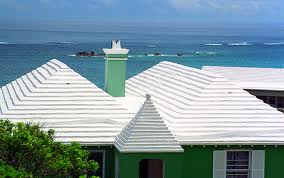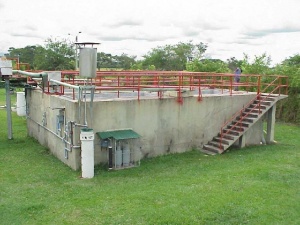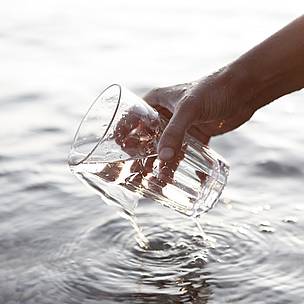Freshwater is critical to life on this planet. Yet we are a species that treats it with such little regard considering how scarce a resource it truly is. I live in a country, Canada, that has an abundance of it. My home city, Toronto, sits on the edge of Lake Ontario, one of the Great Lakes. Those lakes account for 20% of all the freshwater on the planet. Going from rich freshwater resources to a world of scarcity is one that at times is hard to imagine. But humanity in the 21st century is on a collision course with a new reality. The planet may not have enough freshwater to meet human demands by the mid-century as global population peaks at well over 9 billion.
The largest freshwater resource comes from rivers, lakes and human-engineered catchment reservoirs created by erecting dams and ponds. Human ingenuity has the capacity to overcome freshwater scarcity. We have repeatedly demonstrated this. Take the case of Bermuda. It sits isolated in the middle of the North Atlantic Ocean, surrounded by saltwater. Bermuda has no rivers or natural lakes. Importing freshwater is cost prohibitive. Bermuda has developed a low technology solution to deal with the lack of freshwater – design roofs to capture rainwater and store it in tanks for domestic use. The government has mandated contractors to build roof structures that capture 80% of the rain that falls.

Today, globally, the demand for freshwater is outstripping supply. Between 1900 and 1995, freshwater consumption increased sixfold, twice the rate of population growth. In a 1997 United Nations study on freshwater availability, medium to high-water stress was reported in countries with one-third of the world’s population. Where there is freshwater stress you find equal stress on agriculture and food supplies. Freshwater stress gets complicated by seasonal variations in climate. Many water stressed countries lie in areas of the world that experience prolonged dry seasons followed by significant rainfall. From water famine to flood it becomes difficult to develop methods for capturing water from an annual monsoon for use it the parts of the year when no rain falls.
For urban environments in the Developing World, freshwater challenges go beyond drinking water. Polluted water sources reflect a lack of infrastructure to deal with sanitation and wastewater remediation. Polluted water leads to disease. Lack of sanitation makes existing water sources unusable. Where freshwater infrastructure exists Developing World governments regulate pricing keeping it low and making it impossible for the utilities to fund new infrastructure development or maintain existing systems. This leads to dire consequences for the informal urban settlements that are now dominant in these cities. There is a lack of easily accessible freshwater access within these shantytowns, and there is even less infrastructure to deal with wastewater and sanitation.
Agriculture competes with cities for freshwater. And agricultural practices, particularly fertilizer use, contributes to pollution that from field runoff impacts water quality. This is a universal problem affecting the Developed and Developing World. Just this month a study came out from the University of California, Davis, stating that nearly 10% of 2.6 million living in an area of the Central Valley of California are being exposed to nitrate-contaminated water and that the problem is getting worse. If nothing is done to clean up the problem, according to the report, by 2050, 80% of residents in the Tulare Lake Basin and Salinas Valley will be at risk for thyroid cancer, birth defects and fatal blood disorders brought on by high nitrate levels in drinking water.
Managing Wastewater, Wastewater Treatment and Sanitation in Developing World Cities
The Past
Sewage is the chief contributor to poor water quality in developing countries. Direct discharge of pollutant loads from domestic and industrial sources is the norm. Wastewater treatment is non-existent. Lack of proper water infrastructure leads to the mixing of human excretions with storm water. Although this may dilute fecal and bacterial content it also diffuses its disease carrying properties over larger areas.
Solutions from the Developed World are unsupportable in much of the Developing World. Centralized wastewater treatment infrastructure are far too expensive to implement. The technologies developed by Western cities do not present a good fit with local climates and cultures in the Developing World. There are numerous examples of “Western,” colonial-built water infrastructure being abandoned because of the lack of local technical support, funding and ongoing maintenance challenges and equipment breakdowns.
The Present and Future
What can work in the Developing World to deal with wastewater and sanitation to maximize freshwater resources?
There are a number of technologies that are and will make a difference to developing cities the 21st century. These include:
- Decentralizing the treatment of waste by treating it at the source and ensuring only minimum amounts enter the freshwater supply.
- Building lagoons and wetlands to use natural processes to purify wastewater.
- Implementing anaerobic treatment technologies and harvesting what is recovered.
- Building soil aquifer treatment facilities.
1. Decentralized Treatment – In an earlier blog we described EcoTec’s experiment in building homes using recycled plastic bottles. These houses included self-contained sanitation systems for locally treating sewage, recovering the water for gardening and other uses, and using the byproducts from the solids as fertilizer and fuel. The Bill and Melinda Gates Foundation recently awarded eight grants to engineers to invent toilets that do not require connections to freshwater infrastructure. These toilets separate urine from feces. The separated urine gets heated urine to recover the water for reuse, and the nitrogen, phosphorus and potassium salts to use in fertilizer. The separated feces get mixed with materials such as ash, soil and rice husks and then pyrolized (heated in an oxygen-free chamber) to produce biochar, ash and methane for energy. Decentralized systems like this can be implemented in each house or pooled together to serve a cluster of homes. This type of housing does not require a hookup to sanitation infrastructure making it far more suitable in the informal settlements of Developing World cities. By eliminating domestic sewage from water systems, a major source of pollution of the freshwater supply vanishes.
2. Lagoons and wetlands – Whenever and wherever possible Developing World cities should consider finding natural ways to treat wastewater. One method is creating wetlands where natural chemical and physical processes act on pollutants removing them from the water. Water hyacinths and duckweed remove heavy metals from wastewater. Bacteria and algae purify water. The biggest challenge is finding land in urban centres to create the lagoons and ponds needed to let biology take its course. Wetlands may be unsustainable in dry climates.
3. Anaerobic treatment – Using anaerobic bacteria to breakdown solid waste in water has distinct advantages. It can be as small-scale as a composting toilet as described above, or as large-scale as an upflow anaerobic sludge blanket reactor or UASB as seen in the picture below. This particular UASB serves a community of 4,000 recovering water and bio-solids that are used for fertilizer.

UASBs do not require much energy to operate which makes them very effective wastewater treatment systems for Developing World cities. UASBs can also produce bio-gas that can used as an energy source. UASBs can be combined with other wastewater treatment technologies such as fixed film, an aerobic method of treating wastewater involving the use of a porous medium within a settling tank with repeated exposure to air. Brentwood Industries, a Pennsylvania based company, manufactures hybrid systems that combine various treatment methods for recovering freshwater from wastewater sources.
4. Soil Aquifer Treatment – Also known by the acronym, SAT, injects partially treated sewage effluent into unsaturated soils to use the natural filtering properties of the soil to further filter out pollutants. This method is suitable in dry climate zones such as the Middle East and Saharan Africa. Injected water acts as a groundwater recharge restoring aquifers. The process removes bacterial pathogens and helps reduce the concentration of nitrates in groundwater.









